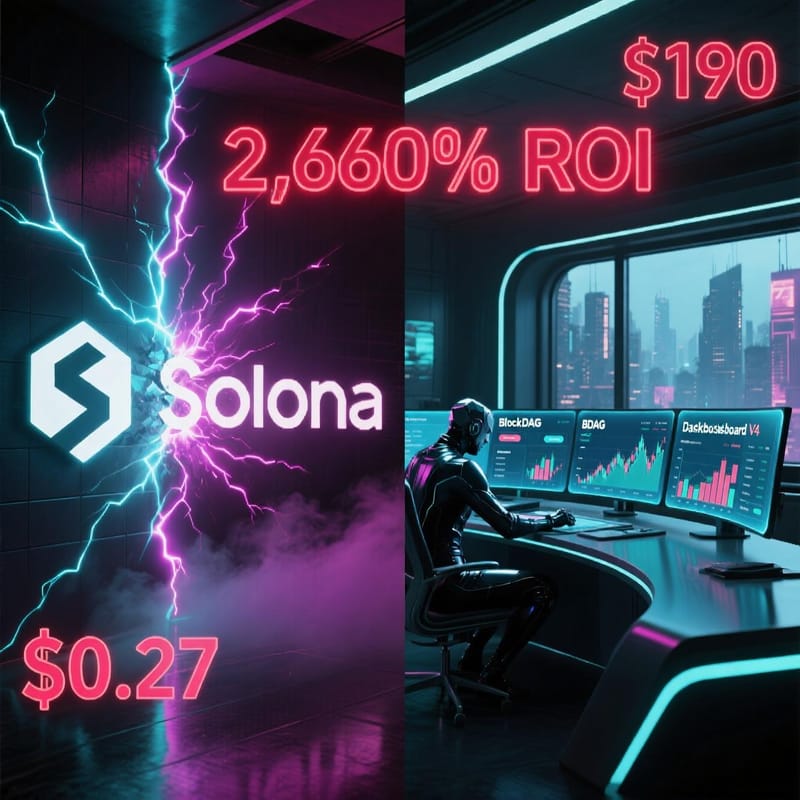Solana vs. Ethereum: The TPS War Ignites as Nasdaq Comparison Sparks Crypto Civil War
Solana’s jab at Ethereum’s speed ignited a firestorm, pitting decentralization purists against performance pragmatists. But beneath the TPS war lies a deeper question: should blockchains compete with Wall Street—or redefine what finance should be?
The Tweet That Broke the Crypto Internet
On August 9, Solana’s official X account dropped a single image with a simple message:
“Ethereum: 22 TPS. Nasdaq: 2,000 trades per second. Think about it.”
It wasn’t just a boast.
It was a declaration of war.
In one stroke, Solana reignited the oldest debate in crypto: speed vs. decentralization.
And the crypto intelligentsia responded—not with memes, but with whitepaper-grade rebuttals.
The Ethereum Rebuttal: “You’re Comparing Apples to Rockets”
Enter polynya, the pseudonymous Ethereum researcher with 94K followers and a reputation for surgical technical analysis.
His response was brutal:
“Nasdaq will forever be thousands of times faster than any decentralized blockchain… short of exotic new physics.”
He wasn’t wrong.
Nasdaq’s Securities Information Processor (SIP) handles 10 million operations per second with 0.02ms latency—a level of performance possible only because it’s a centralized, permissioned system with no need for global consensus.
Ethereum, by design, must achieve decentralized agreement across thousands of nodes worldwide. That consensus—proof-of-stake, finality, validator coordination—takes time.
And that time kills TPS.
But polynya went further:
“Cryptobros are still coping about ‘TPS’ like it’s 2017 instead of building apps that make lives better.”
His point?
TPS is a vanity metric.
Real innovation isn’t speed—it’s trustless coordination at scale.
Anatoly Yakovenko Fires Back: “It’s About Scheduling, Not Consensus”
Solana’s founder, Anatoly Yakovenko, didn’t flinch. He fired back with a technical counter-manifesto.
His core argument?
You’re measuring the wrong thing.
“The comparison to Nasdaq that matters is scheduler throughput and latency—not block TPS or consensus latency.”
Yakovenko explained that Solana’s architecture allows block producers to guarantee transaction inclusion in microseconds—even if the block finalizes later. This mimics the predictability of traditional exchanges, where every order gets processed.
He also defended Solana’s low fees:
“Dropping a transaction vs. including it has nearly zero marginal cost. The floor fee is less than 1 basis point.”
In other words:
Solana isn’t just fast.
It’s economically efficient.
The ZK Proof Showdown: Can Crypto Outrun Physics?
The debate took a quantum turn when Yakovenko challenged the gospel of zero-knowledge (ZK) proofs—a favorite scalability solution in the Ethereum camp.
“ZK proofs are always slower than classical execution.”
His logic?
ZK proofs don’t speed up computation. They compress verification.
And if your bottleneck isn’t replication, but execution, ZK won’t save you.
He offered a thought experiment:
“Assume ZK proofs are free and instant. If downloading a transaction is faster than receiving a proof, why bother?”
His conclusion?
ZK only helps where replication is expensive—like Ethereum L1.
But on high-performance chains like Solana?
It’s overkill.
Beyond Speed: The Real Battle for Financial Democracy
Amid the technical jargon, João Mendonça, a Solana community developer, reframed the entire debate.
“The point isn’t to be as fast as Nasdaq.
It’s to give everyone access to the same speed.”
His vision?
A democratized financial system where:
- Anyone, anywhere, can trade at microsecond latency
- No gatekeepers, no KYC, no trading halts
- Markets run 24/7, uncensorable, unstoppable
Solana isn’t trying to replace Nasdaq.
It’s trying to invert it—turning Wall Street’s exclusivity into a global public utility.
Understanding the Terms: Why This Debate Matters
| Term | Meaning | Why It Matters |
|---|---|---|
| TPS (Transactions Per Second) | How many transactions a network processes per second | Often misused; doesn’t reflect real-world UX |
| Consensus Latency | Time to finalize agreement across nodes | Centralized systems win here |
| Priority Fees | Extra fees for faster processing | Creates inequality in access |
| ZK Proofs | Cryptographic verification without revealing data | Enables scalability, but not speed |
| SIP (Securities Info Processor) | Nasdaq’s real-time data engine | Centralized, ultra-fast, not replicable on-chain |
The core tension?
- Ethereum: Prioritizes decentralization and security
- Solana: Optimizes for performance and accessibility
Final Takeaway: The Future Isn’t Just Faster—It’s Fairer
This wasn’t just a TPS spat.
It was a philosophical fork in the road for crypto.
- Ethereum’s camp says: Decentralization is non-negotiable. Speed comes through layer-2s, ZK, and composability.
- Solana’s camp says: If it’s not fast and accessible, it’s not useful. Performance is a feature, not a flaw.
Both are right.
And both are wrong.
The future likely holds both models:
- Ethereum as the secure settlement layer—the digital gold standard.
- Solana as the high-speed execution layer—the trading floor for the masses.
In the end, the real question isn’t:
“Can crypto beat Nasdaq?”
It’s:
“Should it?”
Because if blockchain’s promise is open, fair, and resilient finance—then speed is just the beginning.





